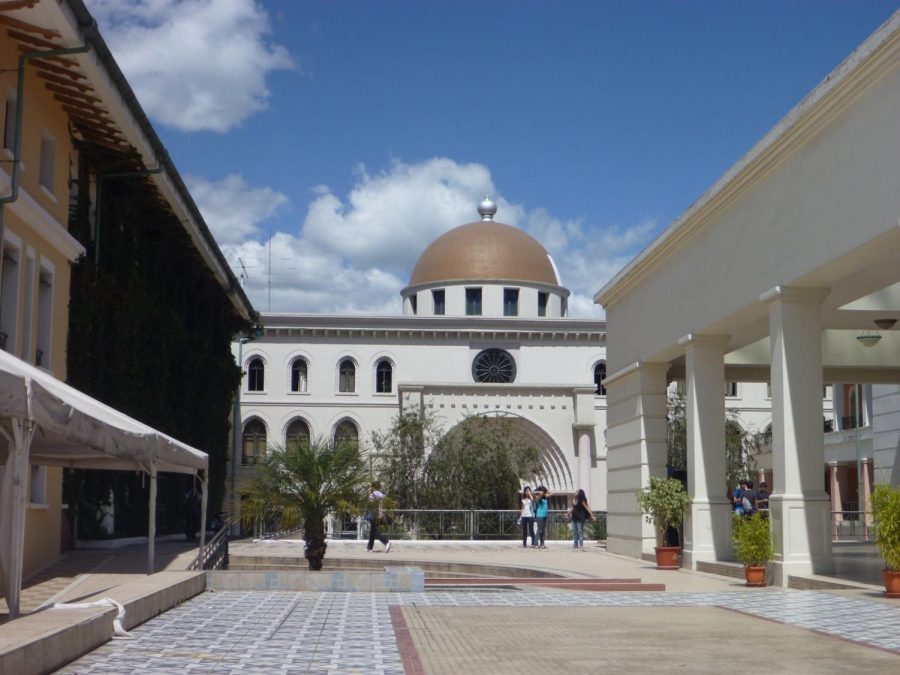QUITO: Expectations vs. reality
I go to school at a beautiful campus, but class is taken seriously. It’s much more difficult than I anticipated.
As much as I hate admitting this, I came to Ecuador with an ethnocentric attitude. I figured that my classes couldn’t possibly be that hard because I was going to a “lesser developed” nation.
Looking back on this sentiment, I can’t help but feel stupid.
Language barrier aside, my classes are challenging— more difficult than my classes at St. Edward’s. Two of my five classes are Spanish language classes with all foreign students. The only difference in set up in these classes from the Spanish classes I took in Austin is that not all of the students are from the United States.
For the first time, I’ve failed assignments and quizzes, and although I am passing all of my classes I currently have the lowest GPA of my academic career. The grading in the majority of my classes leaves little room for error. For example, in my grammar class for every error we have on our weekly papers our grade drops 10 percent. Thankfully I haven’t received a grade like this, but some students have received negative grades on papers, which I didn’t know was possible.
As a native English speaker, I make errors in my papers I write in English, so eradicating all grammar errors in my second language is a tall order. In my Art History class taught in Spanish with Ecuadorians, half of the readings are in English, and I still struggle to understand all of the readings.
The Ecuadorian students don’t always understand all of the English, but when we discuss in class it’s obvious that their understanding of English is a really high level. It’s often frustrating because almost everyone in my art history class, if not everyone, has better English than my Spanish. I think this shows a fault in the U.S. education system and a lack of importance placed on foreign language.
To be fair to the U.S., according to the Ecuadorian government, I go to the most rigorous university in the country. Although St. Edward’s is a fine institution, it isn’t an Ivy League school, so maybe I’m comparing apples to oranges.
However, school isn’t just difficult for the international students. The Ecuadorians struggle as well. I’ve never heard so many conversations about bad grades and legitimate fear of not passing a class as I walk through the halls, and compared to the first day of class the university feels empty.
This is largely because so many students drop out. From my observation, it seems like it’s expected for students to drop out, and no one seems surprised or bothered by the large exodus of students.
In all aspects of life, Ecuadorians are more calm, or “tranquilos,” how they say it here. It’s interesting to see this attitude manifest in the classroom. Back home, if a student doesn’t do their homework or read, the majority of students would try to fake that they prepared for class. In a stark contrast, Ecuadorians are open and extremely honest in this regard. Frequently, in my classes with Ecuadorians they will let the professor know they didn’t read even if the professor didn’t ask. For example, if the professor asks a question, a student might respond by saying “‘Discúlpame,'(forgive me) I didn’t read last night because I didn’t have the time, but I think that ‘blank’ is the answer to your question.”
I also don’t understand Ecuadorian scheduling norms. I’m currently taking five classes, and I’m utterly overwhelmed— I feel like I shouldn’t have taken a homework break to write this blog. However, an average class load here is seven or eight classes. I actually know someone taking 10, and I just don’t really get it.


